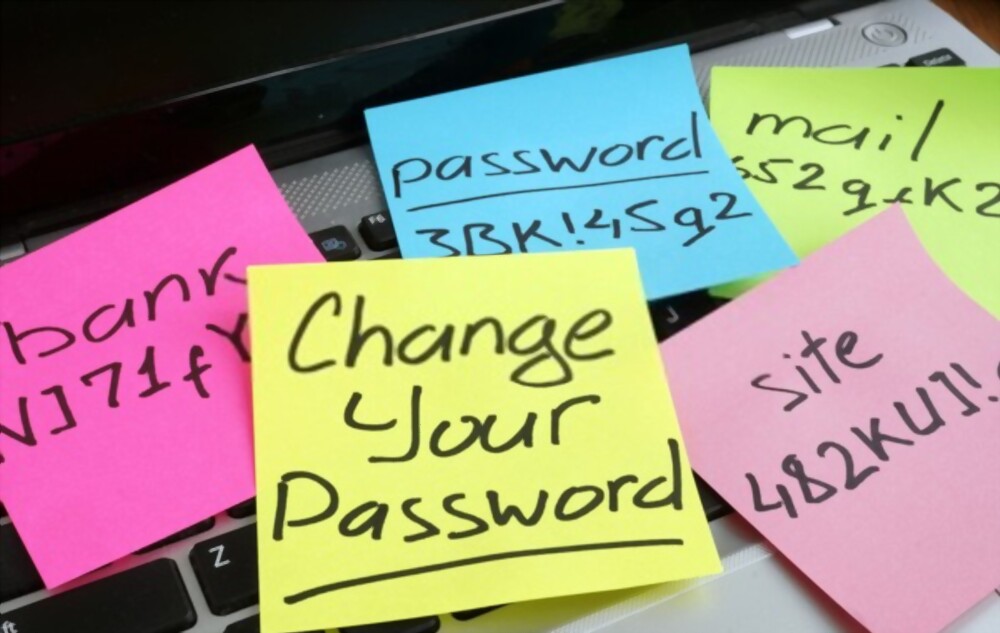Are you worried about credential stuffing attacks? In this post, I’ll share some helpful information about credential stuffing prevention that can prevent these attacks from compromising user accounts on your site.
Table of Contents
What Is Credential Stuffing?
Credential stuffing is a type of cyberattack where a criminal uses stolen usernames, email addresses, and passwords to gain unauthorized access to credential lists and online accounts belonging to real people. This practice is often called “password spraying” since it involves repeatedly logging into different accounts with the same credentials.

Why Is Credential Stuffing Dangerous?
The threat posed by credential stuffing is significant because millions of people reuse their credentials across multiple sites, making them vulnerable to attack. Companies must protect themselves from credential stuffing attacks, including implementing strong authentication methods like multi-factor authentication (MFA). MFA adds an extra layer of security by requiring additional information beyond just a username and password to log into an account. For example, a phone number or physical token might be needed along with a username and password to authenticate a request successfully.
Brute-Force Attacks
Brute force attacks attempt to crack passwords by trying every combination of letters, numbers, and special characters. A brute force attack doesn’t care what the password is; it just tries everything. In contrast, credential stuffing attacks try to steal credentials by guessing common usernames and passwords. They don’t even need to know the username or password.
In contrast, credential stuffing attacks attempt to steal information about legitimate users’ usernames and passwords without logging into those accounts. This makes it much harder for security teams to detect credential stuffing attacks, making them even more dangerous than brute-force attacks.
Some brute-force protections are built into modern browsers, but they’re not always effective at stopping credential stuffing attacks. If you use Chrome, Firefox, Safari, or Edge browsers, you may want to consider using a third-party extension to help prevent credential stuffing attacks.
How Do Credential Stuffers Gain Access?
Hackers steal passwords by intercepting login requests sent from end users. They do this by placing malicious software on computers belonging to targeted individuals. When these devices attempt to log in to websites or use apps, the malware captures the credentials entered by the user. The stolen credentials are then used to access the victim’s accounts.
Hackers exploit websites and mobile app vulnerabilities to gain unauthorized access to accounts. This type of attack occurs when a website or app contains a vulnerability that allows attackers to bypass authentication controls. Once inside the system, hackers may change settings, delete files, or install additional software without the site owner’s knowledge.
For example, an attacker might compromise a popular social media platform such as Facebook and add thousands of fake profiles. Then, the attacker can capture the credentials and impersonate the person whenever someone attempts to sign in using their real name.

Credential Stuffing Prevention Using Multi – Factor Authentication
If you’ve ever used Gmail or Facebook, you’ve seen two-factor authentication and, more recently, multi-factor authentication (MFA). This type of security technology uses something you know (username/email address), something you are (fingerprint, face recognition), and something you do (one-time password sent via text or phone call or answer a security question) to prove who you are.
The benefits of MFA include increased protection against phishing attacks and brute-force attempts to guess weak passwords. The National Institute of Standards and Technology recommends that organizations implement MFA for all online accounts.
Why hasn’t the industry moved faster toward adopting MFA? There are several reasons, including the high cost of implementing it and the potential impact on customer experience.
The first reason is there are many moving parts to an MFA solution. The technology must be able to identify people based on their voice, recognize them when they speak, and then match each person with their account information. This can be done using either text-based systems or speech recognition software. But this requires a lot of data collection and analysis. In addition, the technology needs to work well under different conditions, which means it has to be tested extensively before it goes live.
The second reason is that most companies don’t yet understand how to design an effective MFA program. Some of the problems include:
• Not clearly understanding the risks associated with not authenticating users correctly.
• Not knowing how to balance user convenience with security.
• Not being aware of the best practices for designing MFA programs.
In other words, many companies still haven’t figured out how to make MFA work.
To help companies get started, we are opening our inbox to help you understand what works and doesn’t. We will also share insights from our research into the latest trends in MFA technology.
We’ll provide practical advice and guidance about what types of technologies should be included in your MFA program, how to set up the infrastructure needed to support it, and how to evaluate its effectiveness.

Credential Stuffing Prevention Security Checklist
While there is no silver bullet solution to prevent credential stuffing attacks, several steps can be taken to mitigate them. Here are some recommendations:
• Ensure that all network traffic between your company’s internal network and the Internet is encrypted. Encryption prevents anyone outside your network from reading data transmitted across the connection.
• Use strong passwords. Strong passwords contain at least eight characters (including numbers), have a mix of upper-case and lower-case letters, and are different than any other password you currently use.
• Regularly update software. Ensure that all software installed on your network is updated with the latest security updates.
• Monitor network traffic. Review logs periodically to identify unusual patterns of behavior.
• Keep track of new employees. It is essential to know who has access to sensitive information so that it can be revoked once they leave the company.
• Implement multi-factor authentication. Multi-factor authentication requires more than a username and password to authenticate a user. Instead, it needs something the user possesses (a physical token like a smart card or a smartphone) and something the user knows (like a PIN).
• Restrict access to sensitive systems. Only allow authorized personnel to access critical systems.
• Limit administrative privileges. If possible, limit administrative rights to only those required for day-to-day operations.
• Consider implementing a whitelist approach. A whitelist approach restricts which IP addresses can connect to your network. For example, if you only want to allow connections from certain countries, you could create a list of known safe countries and block all others.
• Do not store credit cards or bank account details on your servers.
• Avoid storing personal information in databases.
• Enable two-factor authentication. Two-factor authentication adds another layer of protection against credential-stuffing attacks. In addition to a username and password, two-factor authentication also requires something the user possesses — usually a hardware device like a smartphone or USB key.
• Verify email address ownership before granting access. This will help ensure that attackers aren’t using accounts.
• Don’t rely solely on email verification. It would help if you continuously verified that the email address associated with a given account matches the one provided when it was created.
• Check for suspicious activity. Monitor log files regularly to detect unauthorized login attempts.
• Change default settings. Many web browsers allow users to fill out forms with their credentials automatically. Disable this feature if you don’t need it.
• Be careful about clicking links in emails. Never click on links embedded within an email message unless you trust the sender.

Credential Stuffing Defense Using a Password Manager
Password reuse is something most people do without considering how risky it is. A recent study found that almost half of people reuse the same password across different online accounts. This makes them vulnerable to credential stuffing attacks, where hackers steal a valid username/password combination from one site and try it out on another.
A simple solution to protect against credential stuffing attacks is to do a password reset and change your login information on every account you have. But there are some things you can do to make sure attackers don’t use your existing logins.
First, don’t use the same password for everything. If someone steals your email address, they could gain access to your bank account, social media profiles, etc. Changing your password on each site you use makes it harder for attackers to use your old credentials.
Consider using a password manager to generate and keep track of passwords. These programs securely store your usernames and passwords, so they won’t fall into the wrong hands. They also allow you to generate strong random passwords that you can easily recall. And since you won’t be using guessable passwords like “123456” anymore, you’ll be much more secure.
Third, keep track of your logins. You should always check your inboxes and spam filters for suspicious messages. Also, pay attention to your browser history. Hackers often look for where you’ve reused your credentials, so make sure you regularly delete those cookies and browsing histories.
Lastly, contact your IT team immediately if you suspect someone else is trying to hack into your accounts through failed login requests or other suspicious activity.

Biometrics Instead of Passwords
Many businesses are turning away from traditional username/password combinations to combat this problem and moving toward more secure alternatives like biometric identification, one-time passcodes, and tokenization. One example of this shift is passwordless authentication. This method uses unique identifiers that verify a person’s identity rather than what they know about themselves. For instance, you could use a fingerprint reader or facial recognition software to identify someone.
Passwords are easy to steal, especially when they are stored unencrypted online. But biometrics is much harder to compromise. They require physical contact with a specific object, such as a finger, iris, or face. Even if a hacker gets access to your biometric information, there is no way to change it without being detected.
Continuous authentication systems use biometrics (such as fingerprint scans) and behavioral patterns (such as keyboard strokes) to verify a person’s identity in real-time. These authentication mechanisms are designed to be hard to hack because they require an attacker to steal someone’s username and password instead of just stealing their credentials outright.
But continuous authentication isn’t perfect. Hackers have found ways to trick some of these systems, including the ones that rely on facial recognition technology. They’ve bypassed traditional security measures by creating fake faces that look just enough like the person whose identity they want to steal to fool the system.
Wrapping Up
When it comes to credential stuffing prevention, the first step is to educate your users. Educate them on how to protect themselves against phishing attacks, such as clicking links in suspicious emails. Also, teach them how to avoid entering passwords into websites like Facebook, Twitter, Google, etc.
You can take specific steps to reduce the risk of credential-stuffing attacks. However, no system is entirely foolproof. Therefore, it is recommended that you implement a multi-layered approach to defending your website against credential stuffing attacks.



Recent Comments